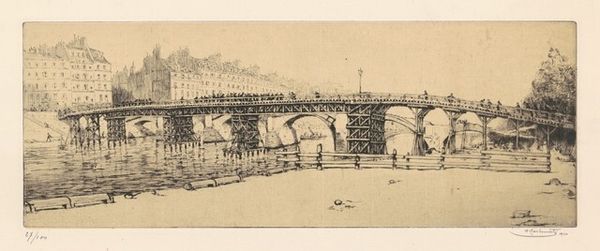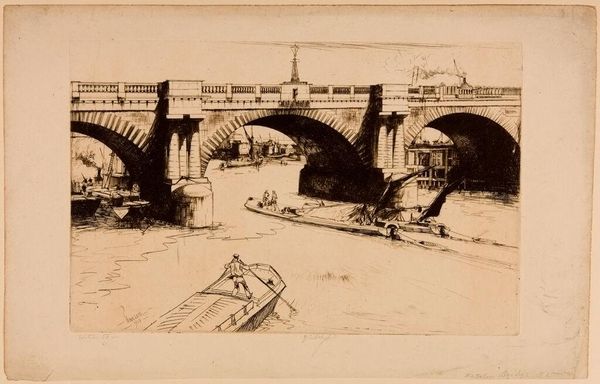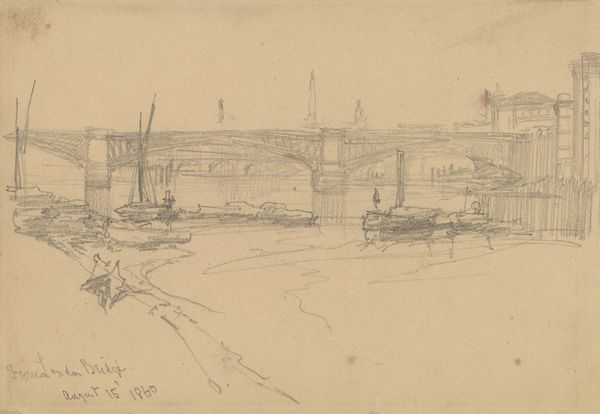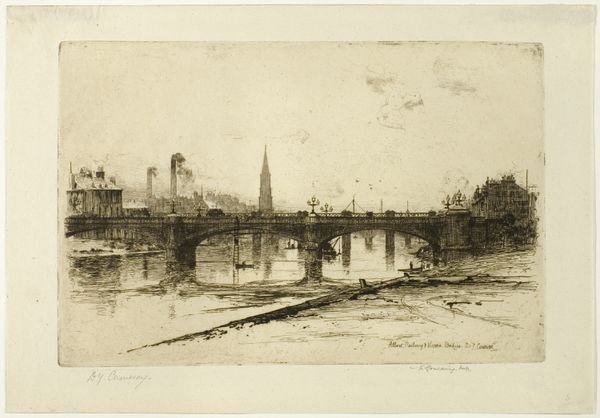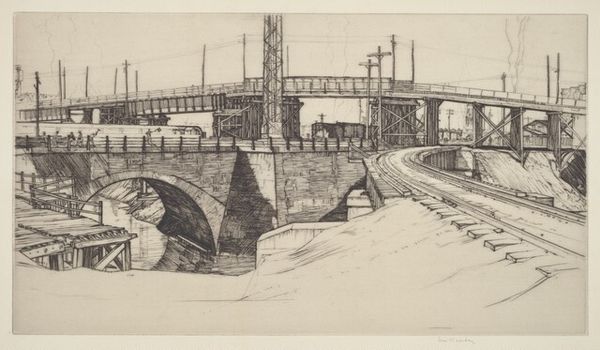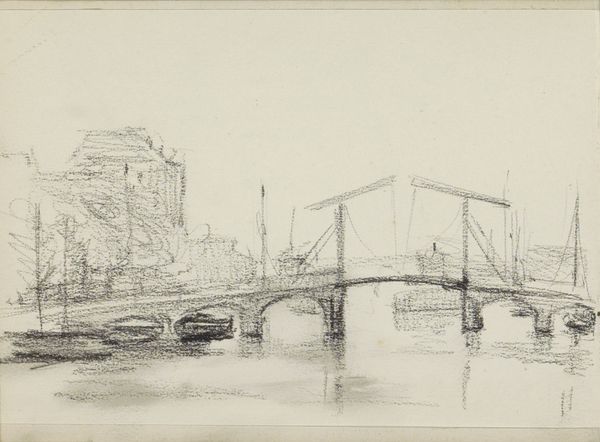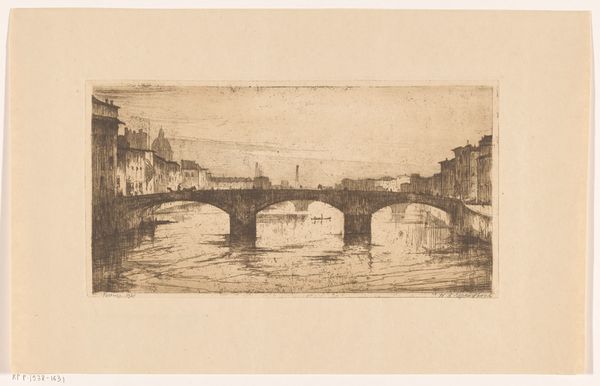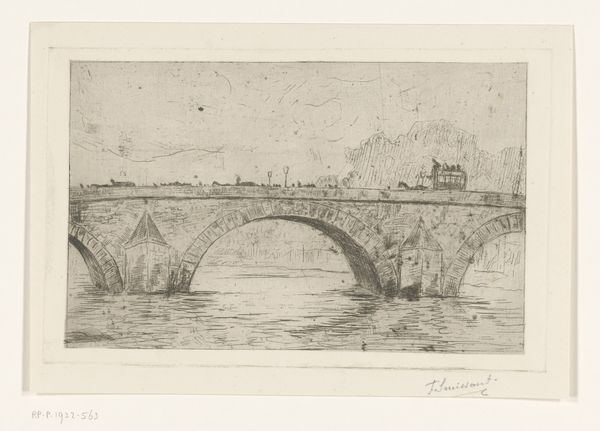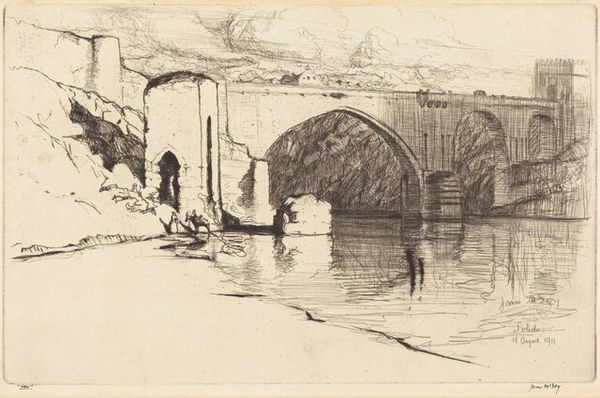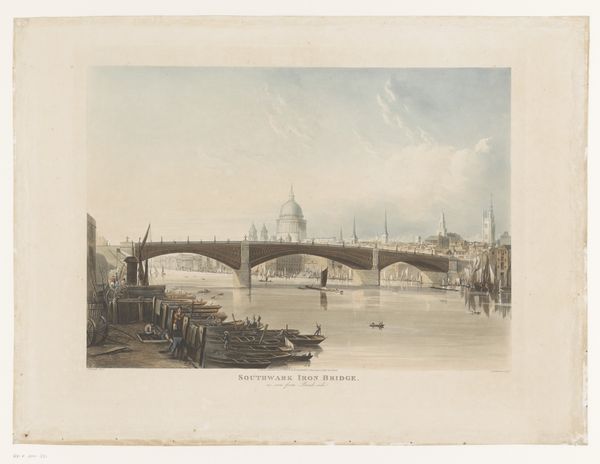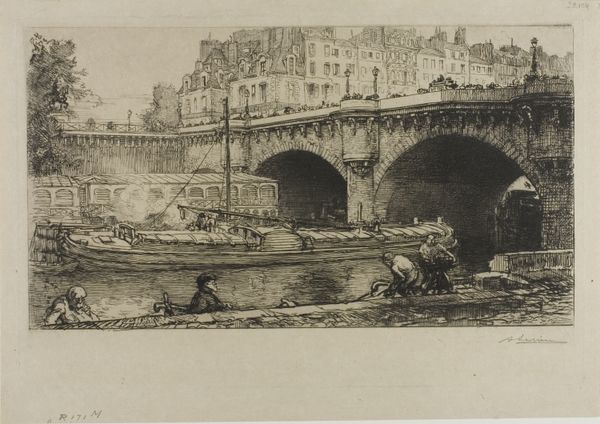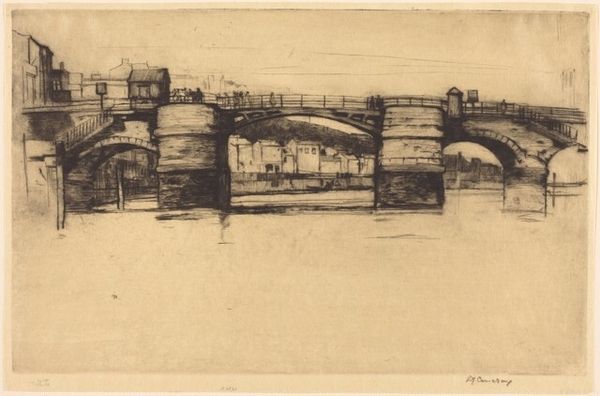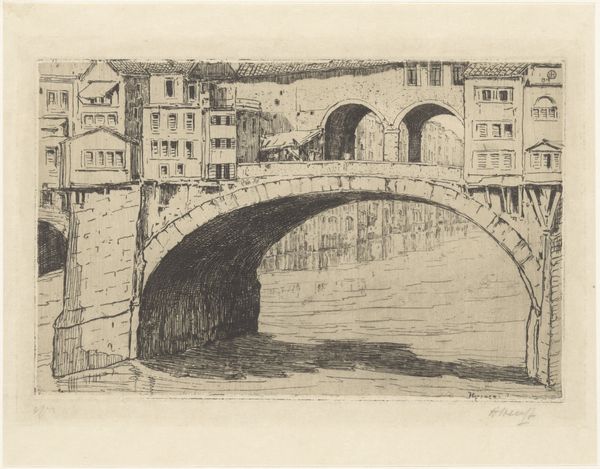
print, etching
# print
#
impressionism
#
etching
#
landscape
#
etching
#
cityscape
Dimensions: plate: 17.5 x 34 cm (6 7/8 x 13 3/8 in.)
Copyright: National Gallery of Art: CC0 1.0
David Young Cameron created this etching, Jamaica Street Bridge, using a metal plate, acid, and ink. The magic of etching lies in its indirectness; the artist scratches an image into a wax-covered plate, bathes it in acid, and then the acid bites into the exposed metal lines. In Cameron's print, we see a Glasgow bridge rendered with a remarkable economy of line. The urban landscape is built up through a mesh of marks, conveying the industrial energy of the city. The bridge itself, a feat of engineering, becomes a stage for the everyday movements of people and goods, all captured through Cameron's skilled hand. The etching process allowed Cameron to create multiple impressions of the scene, making it accessible to a wider audience. This democratisation of art aligns with the era's changing social landscape. So, next time you look at a print, remember it’s not just an image, but a testament to the artist's skill and the social context in which it was made.
Comments
No comments
Be the first to comment and join the conversation on the ultimate creative platform.
